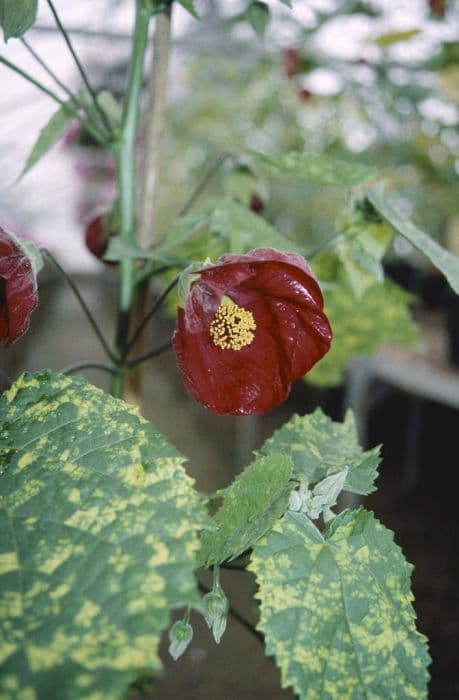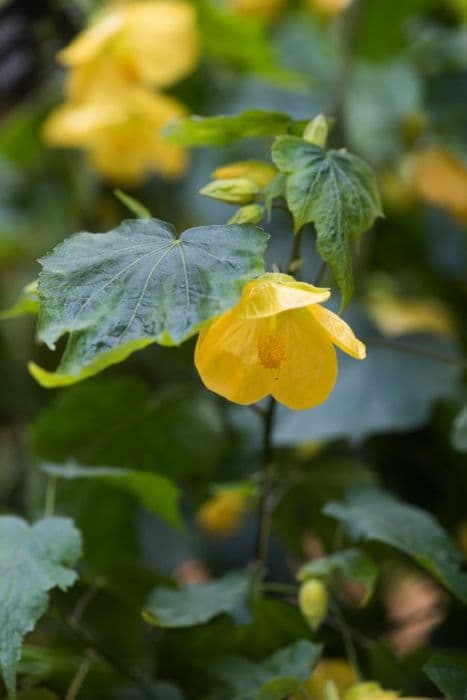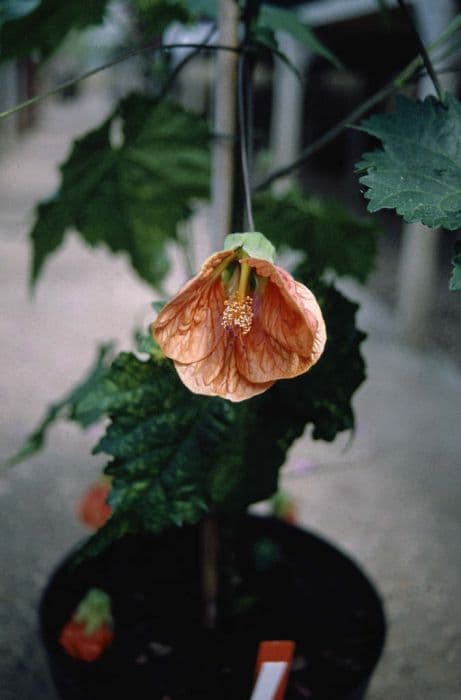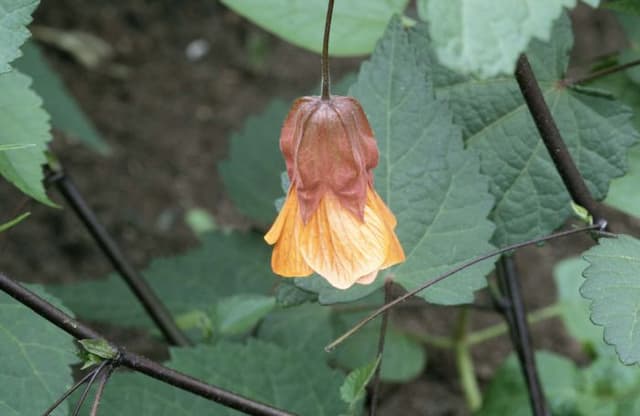Narrow-leaved Lacebark Hoheria angustifolia

ABOUT
The plant commonly known as narrow-leaved lacebark features slender, elongated leaves with a glossy green surface and a somewhat serrated edge, giving it a delicate and refined look. The foliage is typically dense, providing a lush appearance. During the flowering season, it produces clusters of small, fragrant white flowers that may attract various pollinators. These star-shaped blooms add a decorative touch to the plant and can create a contrasting backdrop against the dark green leaves. After flowering, the plant may bear fruit which evolves from green to a dark shade as they mature, adding yet another layer of interest to its appearance. The overall form of narrow-leaved lacebark is elegant and it can present a striking figure with its rich textures and seasonal changes.
About this plant
 Names
NamesFamily
Malvaceae
Synonyms
Narrow-leaved Lacebark, Narrow-leaved Houhere, Mountain Ribbonwood
Common names
Hoheria angustifolia
 Toxicity
ToxicityTo humans
Narrow-leaved lacebark is not commonly known to be toxic to humans. There are no well-documented cases of poisoning or adverse reactions from ingesting this plant.
To pets
Narrow-leaved lacebark is not widely recognized as a toxic plant to pets. There is no significant data suggesting that ingestion of this plant by animals such as dogs or cats would lead to poisoning or severe health consequences.
 Characteristics
CharacteristicsLife cycle
Perennials
Foliage type
Evergreen
Color of leaves
Green
Flower color
White
Height
15 feet (4.57 meters)
Spread
10 feet (3.05 meters)
Plant type
Tree
Hardiness zones
8
Native area
New Zealand
Benefits
 General Benefits
General Benefits- Attracts wildlife: Hoheria angustifolia, commonly known as narrow-leaved lacebark, provides food and habitat for various bird species and beneficial insects.
- Aesthetic appeal: With its attractive foliage and delicate white flowers, it is a popular choice for ornamental gardens.
- Erosion control: Its root system can help stabilize soil and prevent erosion on slopes.
- Shade and shelter: The narrow-leaved lacebark can be used to create shady areas in gardens and provide shelter from wind when planted as a hedge or screen.
- Eco-sustainability: Being a native plant to New Zealand, it promotes biodiversity and supports local ecosystems when planted in its home region.
- Wood uses: The wood of Hoheria angustifolia is lightweight and can be used for specialty items such as crafts and carvings.
- Low maintenance: Once established, it generally requires minimal care, making it a suitable choice for low-maintenance landscapes.
- Drought tolerance: Mature plants can tolerate periods of drought, reducing the need for frequent watering.
- Fast-growing: It grows relatively quickly, providing a rapid impact in landscaping projects.
 Medical Properties
Medical Properties- Analgesic: Hoheria angustifolia, commonly known as Narrow-leaved Lacebark, has been traditionally used by Māori in New Zealand for its pain-relieving properties.
- Anti-inflammatory: The plant has been known to possess anti-inflammatory agents, helping in reducing inflammation.
- Antiseptic: Narrow-leaved Lacebark has been used for its potential antiseptic qualities, aiding in preventing the growth of disease-causing microorganisms.
- Healing wounds: It is sometimes applied to wounds to promote healing, thanks to its believed medicinal properties.
- Digestive aid: The plant has been used traditionally to help with digestion issues.
- Respiratory aid: Historically, it has been used to aid in respiratory ailments.
 Air-purifying Qualities
Air-purifying QualitiesThis plant is not specifically known for air purifying qualities.
 Other Uses
Other Uses- Edible Leaves: The young leaves of narrow-leaved lacebark can be eaten either raw or cooked, providing a slightly bitter flavor to salads or as a cooked green.
- Fiber Source: The inner bark provides strong fibers that can be used for making traditional Maori textiles or ropes.
- Woodworking: The timber is light and can be used for making crafts, carving, and light indoor construction.
- Bird Attraction: The tree flowers are a nectar source for native birds, making it a suitable choice for wildlife gardens.
- Insect Habitat: The dense growth habit of narrow-leaved lacebark provides shelter for beneficial insects, thereby promoting biodiversity.
- Landscape Design: Because of its elegance, narrow-leaved lacebark can be used as a specimen plant or for hedging in landscape design.
- Soil Erosion Control: With its robust root system, the plant can help stabilize banks and slopes, preventing soil erosion.
- Educational Use: As a native plant, narrow-leaved lacebark can serve as a teaching tool in schools for lessons on botany and conservation.
- Ornamental Dye: The bark can provide a natural dye for fabrics, offering a range of soft brown colors.
- Sound Barrier: Planting narrow-leaved lacebark in groups can help reduce noise pollution due to its dense foliage.
Interesting Facts
 Feng Shui
Feng ShuiThe Narrow-leaved Lacebark is not used in Feng Shui practice.
 Zodiac Sign Compitability
Zodiac Sign CompitabilityThe Narrow-leaved Lacebark is not used in astrology practice.
 Plant Symbolism
Plant Symbolism- Resilience: Hoheria angustifolia, commonly known as narrow-leaved lacebark, is known for its resilience, as it can thrive in various soil types and withstand different environmental conditions.
- Adaptability: The narrow-leaved lacebark’s ability to adapt to different habitats symbolizes flexibility and the capacity to adjust to changing circumstances.
- Purity: The white flowers of the narrow-leaved lacebark are often associated with purity and innocence, reflecting its pristine and delicate appearance.
- Healing: Traditionally, some parts of the narrow-leaved lacebark were used for medicinal purposes by indigenous people, which gives it the symbolic meaning of healing and health.
- Protection: As a plant that can form dense thickets, narrow-leaved lacebark can symbolize protection and shelter against external forces.
- Growth: The rapid growth of the narrow-leaved lacebark from a shrub into a small tree symbolizes personal development and the potential for growth in one's life.
 Water
WaterLacebark requires regular watering to maintain a consistently moist but not waterlogged soil. In general, provide about 1 gallon of water per week for each inch of trunk diameter measured at knee height. During hot and dry periods, increase watering to twice a week. It is important to water deeply and slowly, allowing the water to soak into the soil to reach the roots rather than just wetting the surface. Avoid overwatering as this can lead to root rot; ensure drainage is sufficient.
 Light
LightLacebark prefers full sun to partial shade. The best spot for the plant would be in a location that receives direct sunlight for at least six hours a day. However, in very hot climates, protecting the plant from the harshest afternoon sun with some dappled shade is beneficial.
 Temperature
TemperatureLacebark thrives in moderate to warm temperatures, with ideal conditions ranging between 50°F and 85°F. The plant can tolerate a minimum temperature down to about 20°F. However, it's important to avoid exposing the tree to extreme cold as it can damage the plant's tissues.
 Pruning
PruningLacebark should be pruned to maintain shape and encourage healthy growth. The best time for pruning is in late winter or early spring before new growth begins. It’s typically pruned every two to three years, removing dead or crossing branches to improve air circulation and light penetration.
 Cleaning
CleaningAs needed
 Soil
SoilNarrow-Leaved Lacebark thrives best in well-draining soil rich in organic matter with a slightly acidic to neutral pH, typically ranging from 6.0 to 7.0. A good soil mix would consist of loam, peat, and coarse sand or perlite to ensure proper drainage.
 Repotting
RepottingNarrow-Leaved Lacebark should be repotted every 2-3 years or when it has outgrown its current pot. Young plants may need more frequent repotting while mature ones can be repotted less often.
 Humidity & Misting
Humidity & MistingNarrow-Leaved Lacebark prefers moderate humidity levels; however, it is quite adaptable and can tolerate different humidity conditions if other growing requirements are met.
 Suitable locations
Suitable locationsIndoor
Place Narrow-Leaved Lacebark in bright, indirect light with some direct sun.
Outdoor
Plant in a sheltered spot with well-draining soil and partial shade.
Hardiness zone
8-11 USDA
 Life cycle
Life cycleNarrow-leaved Lacebark (Hoheria angustifolia) begins its life cycle as a seed, which germinates in spring or early summer in suitable moist and well-draining soil conditions. The seedling emerges and grows into a juvenile plant, establishing a root system and a rosette of leaves. As it matures, the plant develops a woody stem and branches, entering the vegetative stage in which it grows leaves in a lanceolate shape unique to its species. After several years, Narrow-leaved Lacebark reaches maturity and begins the reproductive stage, producing clusters of small, fragrant white flowers in summer, which are attractive to pollinators like bees and butterflies. Following pollination, the plant produces small capsules that eventually dry and release seeds, continuing the life cycle. Throughout its life, the Lacebark may experience cycles of growth and dormancy, influenced by seasonal changes in its native New Zealand environment.
 Propogation
PropogationPropogation time
Spring to Summer
The most popular method for propagating Hoheria angustifolia, also known as narrow-leaved lacebark, involves semi-hardwood cuttings. This process typically takes place during the summer when the plant's growth has begun to mature but is not yet fully hardened. A cutting of about 4 to 6 inches (10 to 15 centimeters) is snipped from a healthy branch, making sure to include several leaf nodes. The cut end is often dipped in rooting hormone to encourage root development and then planted in a well-draining soil mix. To maintain humidity, the cutting can be covered with a plastic bag or placed in a propagation chamber. The soil should be kept moist, but not waterlogged, until roots have developed, which usually takes several weeks. Once rooted, the new plant can be gradually acclimatized to outdoor conditions before being planted into its final location.





![Abutilon [Yellow Trumpet]](/_next/image?url=https%3A%2F%2Fplants-admin.emdemapps.com%2Fimages%2Fplants%2F%2Fimages%2F604b5caa8b4fb.png&w=640&q=75)


